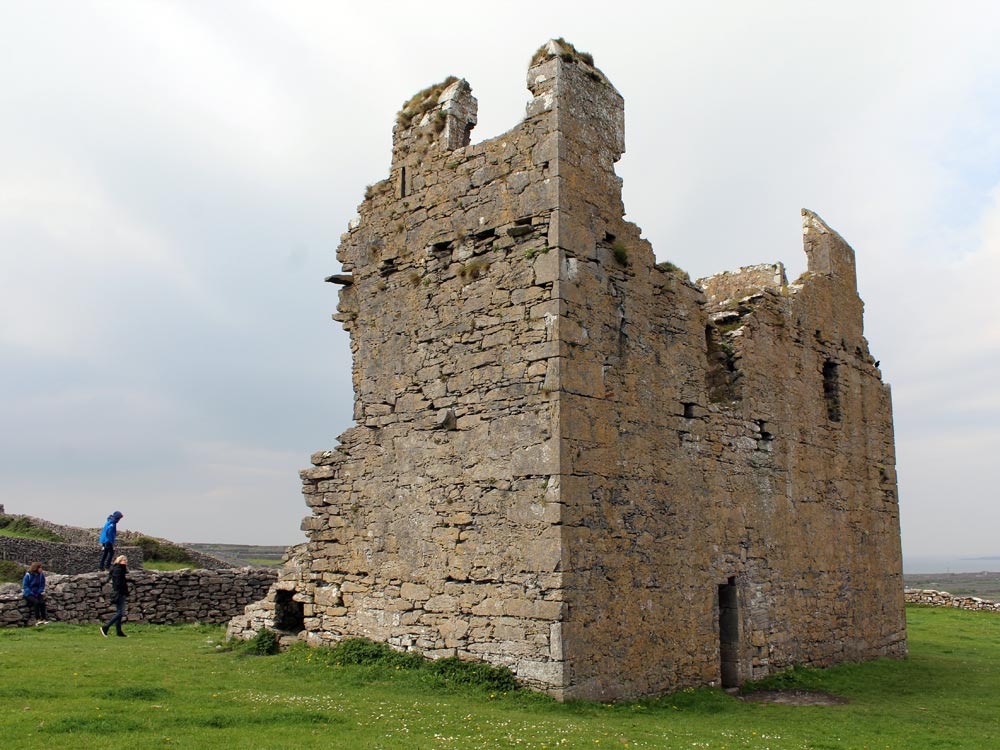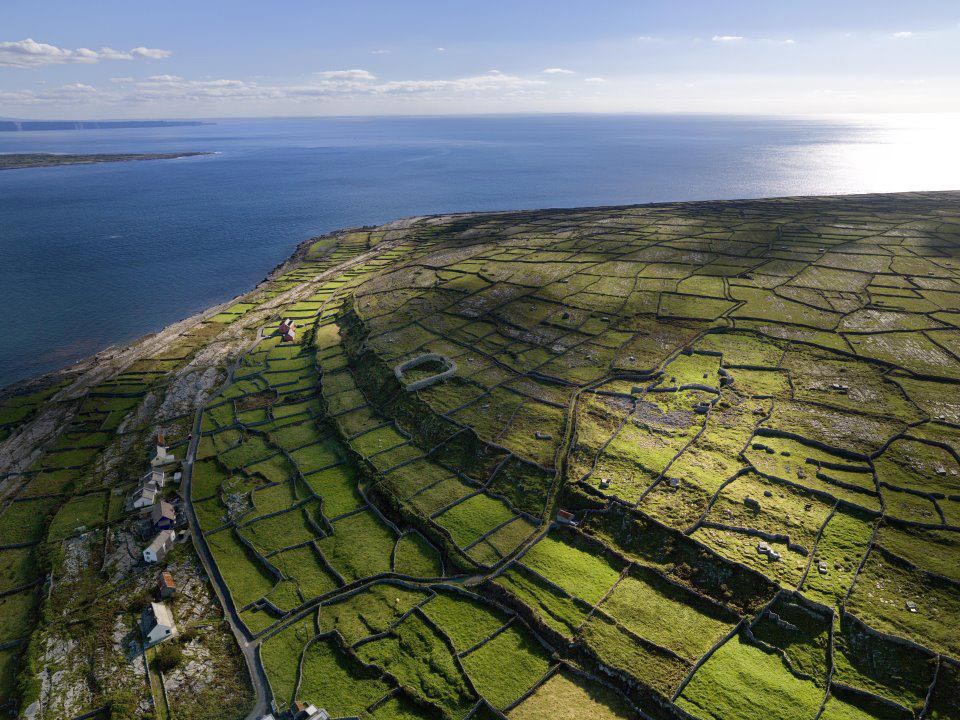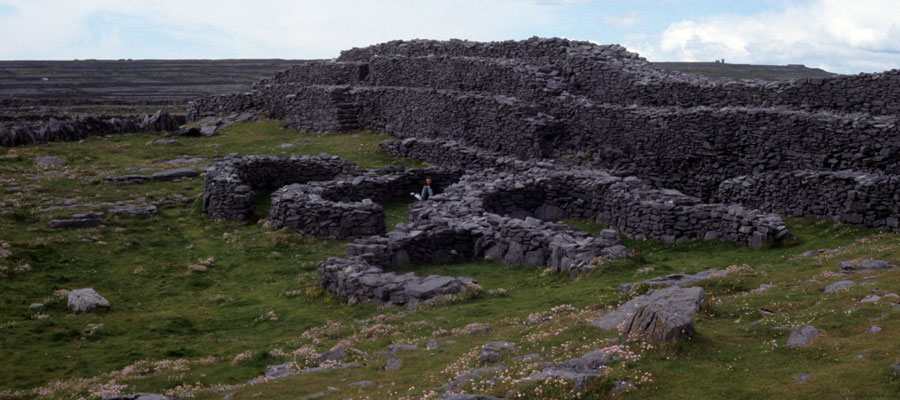The Aran Stone Forts
The Black Fort is the next largest monument on Inish Mor after Dun Aonghus. It is spectacularly sited on a prominatory that juts out into the sea and is partly undercut by the ocean. Lumps of the walls that were noted in antiquarian reports have since fallen into the sea.

"This univallate (single walled) fort is located at the eastern end of Inis Meáin and overlooks the modern harbour. Unlike the other stone forts on the islands it is roughly square in plan. This type of stone fort also occurs in the Burren and south Mayo and is generally considered to be a variant on the circular cashel. It is possible however that square forts may have appeared quite late in the development of cashels and not all may have been settlement sites.
The interior of Dún Fearbhaí slopes down steeply - from the higher southern part of the interior it is possible to look out over the enclosing wall towards the harbour. This suggests that the fort was built to defend the harbour (and the island) from attack and it may also have protected a fleet anchored in the bay below. The fort is likely to have been built sometime between 700 - 900 AD."

The Fort consists of a massive wall about 100 meters long and 4 - 5 meters thick, which cuts off and protects the area within. Outside the wall is a defensive feature, a chevaux de frise, a dense patch of jagged limestone uprights similar to the one around Dun Aonghus.


